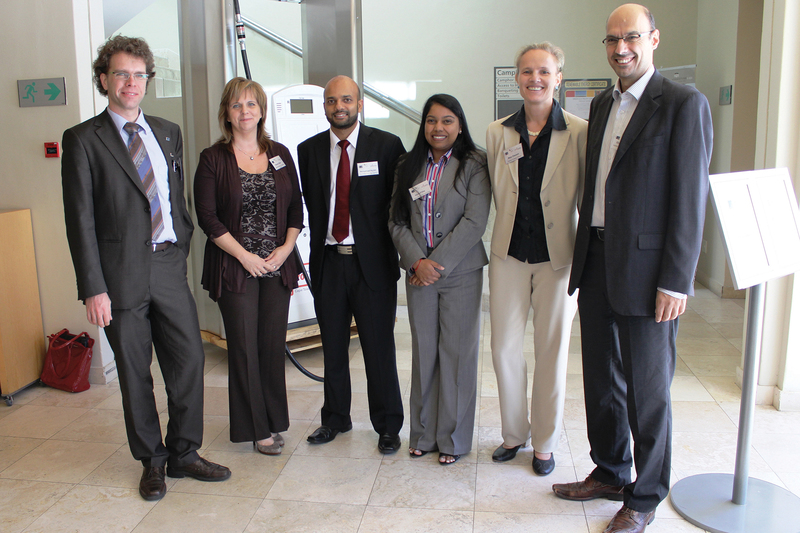Value-added technologies a vital spin-off to fuel cell development
25 April 2013 | Story by Newsroom
The recent conference on hydrogen and fuel cell technology (HFCT) co-hosted by UCT's HySA/Catalysis Competence Centre and Germany's Centre for Fuel Cell Technology (ZBT) can be described as a watershed in South Africa's ambitions to be a world player in the hydrogen economy.
The workshop, titled PEM Fuel Cell Systems in South Africa: Supply Chain Opportunities and PGM Beneficiation, drew representatives from industry, government and academia from both countries to chart HFCT collaborations between South Africa and Germany.
Vinny Pillay expressed the Department of Science and Technology's wholehearted support for partnerships in the area, pointing out that this year - declared a South Africa-Germany Year of Science - might be a good time to launch such mutually beneficial ventures.
Also on board was the Western Cape Department of Economic Development and Tourism, said acting director of manufacturing-industry development, Anita du Plooy. And Jaco Mostert added the backing of the Limpopo Department of Economic Development, Environment and Tourism, outlining some of the benefits collaborations would hold for the province, a major producer of platinum group metals (PGMs), a key component in fuel cell catalysts.
Maja Clausen, head of Education, Research, Science & Innovation at the German Embassy in Pretoria, said South Africa is seen as a key player in Africa, especially as Germany looks for strategic partners on the continent.
And there's much to gain for South African industry, government and academia, said Dr Peter Beckhaus, head of the fuel cells and systems division at Zentrum für Brennstoffzellen Technik (ZBT). He described the advances Germany has made in fuel cell technology following a major overhaul of its national energy portfolio. These include a plethora of products already on the German market, from the use of hydrogen fuel cells as main and back-up power systems in homes, in telecommunications, and in industry. Even the giants of its renowned car industry - Mercedes Benz and VW among them - are eyeing hydrogen fuel cells, said Beckhaus.
It's exactly that kind of expertise that South Africa would want to tap into, explained HySA/Catalysis' Dr Sharon Blair, particularly as the centre has aspirations to provide 25% of the hydrogen world's fuel cell catalysts by 2020. Those PGM-based catalysts would allow South African industry to add value to its array of PGMs, rather than merely exporting it as raw material, only to import greater-value goods that contain those self-same metals.
There are other advantages for South Africa in seeking such international partnerships, such as the development of local human capital (trained in HFCT) and, as per HySA/Catalysis's agreements with its international partners, the use of PGM-based catalysts in the products of such international partners.
In the long run, this would make South Africa more than just a consumer of HFCTs, said Blair.
"I should point out that the main goal is not, though it may look like that, to prepare South African markets for the hydrogen economy. The main goal is to prepare South Africa to be an exporter of value-added technologies that include platinum group metals to the world."
 This work is licensed under a Creative Commons Attribution-NoDerivatives 4.0 International License.
This work is licensed under a Creative Commons Attribution-NoDerivatives 4.0 International License.
Please view the republishing articles page for more information.










